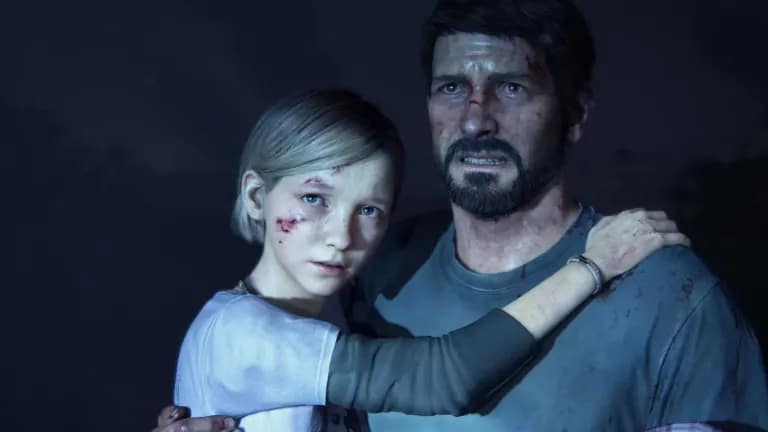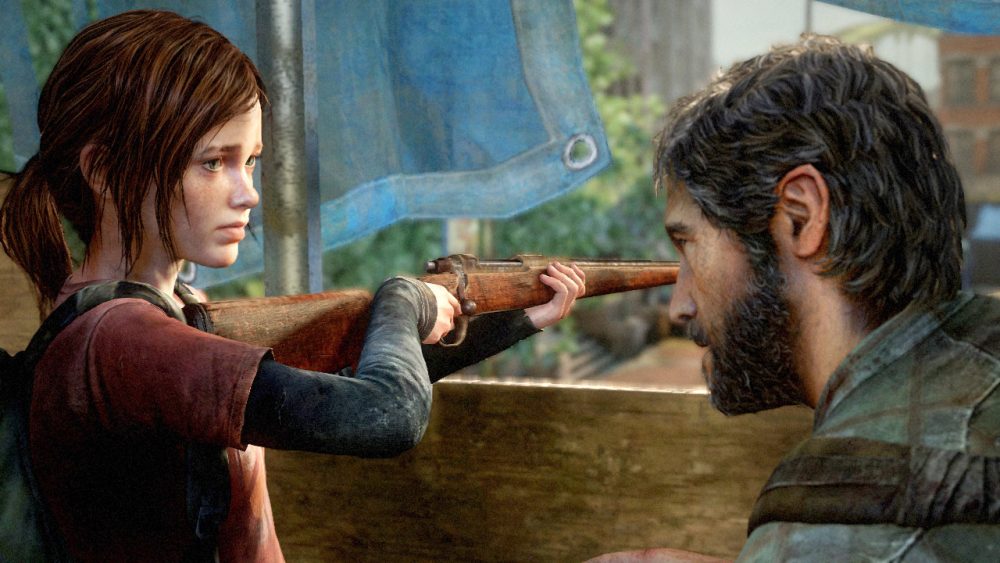We’re here to talk about The Last of Us, but also, stress the need for why this column exists in the first place. Here are my two reasons.
First, I want to create a space where I can explore talking about writing as an art form and emphasize why human storytelling, rooted in empathy and lived experience, still matters in our digital age.
The second was to use that understanding to tackle some of the harder-to-breach subjects of the world today in a different type of reporting. To discuss the cyclical nature of our history and analyze the pros and cons of the content-saturated landscape of today’s era.
Let’s be real: oversaturation is coming. I see it not just in entertainment, but in the way our culture operates. The rise of AI-generated books has already flooded the book market, and I genuinely think comics and video media are next. Over the past few years, YouTube and social media platforms like TikTok have turned art discourse into what’s essentially “content farms,” and tech companies, eager to feed the constant demand for brand engagement, built algorithms to maintain the user’s attention.
This is the reality of the “ChatGPT: Write Me a Book” era. The commodification and automation of the arts, missing the entire point of the human experience: the magic of creating something together. How it happened and why is a complicated history, but it’s one all tied back—strangely enough—to a literary theory.
 IC: Wikipedia
IC: WikipediaThe Monomyth Explained
The Monomyth is related to all of these problems in entertainment today. Stories, by their nature, are a reflection of society, but to see it, you need to understand what the Monomyth is—and what exactly it isn’t.
The Monomyth, also known as The Hero’s Journey, is a recurring narrative pattern told throughout all of human history. From ancient myths to religious texts, these patterns find prevalence in many texts of Western philosophical thought. Yet, the Monomyth is a theory, not a law. A guideline that reflects a universal theme of humans overcoming adversity or conflict.
What the Monomyth isn’t, then, is a rigid algebraic formula or checklist for writing a story. It was never intended to be more than a pattern of reflection on something deeper—an instinctual rhythm in processing the nature of narrative, which Joseph Campbell, the author who wrote of it, had found in texts throughout history.
Mind you, Campbell himself credited that these roots to mythology always went deeper, starting with Aristotle’s Poetics, a book that defined classic literary theory and the progenitor of the three-act structure: setup, rising action, and resolution.
You can find this pattern in classics such as The Odyssey or The Epic of Gilgamesh. You’ll also find it in stories like Star Wars, comics like The Sandman, or in video games like The Last of Us.
With all that said, let’s break down the Hero’s Journey using examples from these 3 stories in their respective mediums.
The Hero’s Journey
Joseph Campbell theorized that The Hero’s Journey was broken down into three acts for every story: The departure, initiation, and return home; or simply put, a story’s beginning, middle, and end. Campbell believed it followed 17 steps. Here they are.
 PC: Naughty Dog
PC: Naughty DogTHE DEPARTURE
1 The Call to Adventure
Every story begins with getting to know the hero and the world before, when an inciting incident disrupts their normal. This disruption tasks the hero to change with a goal now in place.
Sandman: It starts with Dream’s capture by Rodrick Burgess and his imprisonment away from the waking world. The call here is the cult calling upon Death but obtaining Dream.
Star Wars: It starts with the droids’ escape/Luke’s life on Tatooine. Then the call for help in R2’s rescue message.
The Last of Us: It starts with Joel losing his daughter and then 20 years of hardened survivalism. His life as a roughneck smuggler in Boston with Tess before being called to escort Ellie on a job.
2 The Refusal of The Call
It is rare for the hero to just go on to accept the task, and so the hero has to actively make the choice to go through with it for the sake of conflict and character development.
Sandman: Dream refuses the call to help the cult. The consequences are his imprisonment and inability to return home, leading to horrible things in the Dreaming, like Encephalitis Lethargica and numerous existential problems involving dreams gone awry.
Star Wars: This one is Luke’s initial hesitance to help the droids. He’s more concerned with his life on Tatooine.
The Last of Us: It’s Joel’s reluctance to do the mission of bringing Ellie to the fireflies, as it will trigger his trauma of failing to save his own daughter.
3 Supernatural Aid/Meeting the mentor
The hero finds help from beyond and/or meets a guide who’ll help them on their journey.
Sandman: Again, it’s not always a mentor. For this one, it’s when Dream stumbles upon the sleeping guard and reenters the Dream World for the first time. It’s his regained supernatural abilities serving as a device to get him to escape from his prison.
Star Wars: Obi-Wan Kenobi.
The Last of Us: Weird as it sounds, this is both Tess and Bill. Not as personal mentors but as thematic life guides. It’s his reaffirmation of why we care about our loved ones: with Tess being Joel’s unsaid romantic partner, but also with Bill, through his life story with Frank. These emotional moments spark something in Joel that reminds him why love is important. This gets reflected in his growing care for Ellie. It’s also the impetus to Joel’s savagery along the journey, the theme throughout the series being: What extremes will we do to keep our family alive?
4 Crossing the First Threshold
The hero leaves behind the known world and embraces a new one.
Sandman: In this one, it’s Dream’s return to the neglected Dream World and his plans to regain his three items of power. His first mission to get the pouch back from John Constantine.
Star Wars: For Luke, it’s going to Mos Eisley to start the mission to save Leia with Ben.
The Last of Us: This is sort of a video game exclusive medium. For this one, it’s really Ellie’s joy in leaving her world behind at the Boston QZ, plus, Joel’s reactions to it. I should also stress video games have a much easier time with this as they have boundaries and explorable worlds.
5 Belly of The Whale
Using Jonah and the whale as the example, this is when the hero chooses to fully immerse themselves into this new world and gets into it deep.
Sandman: It’s Dream going to the bowels of hell to retrieve his helm and restore the dreaming.
Star Wars: Luke and friends are pulled into the Death Star’s tractor beam and are now in the thick of the empire’s greatest evil.
The Last of Us: It’s Joel’s first big confrontation with the hunters in Pittsburgh. Joel and Ellie have struggled to survive against zombies and escape FEDRA, but here is when they’re met with their first leaving the world behind big challenge: hunters, humans willing to kill innocents for supplies. As a result, Joel and Ellie kill a lot of bad people (which is something the show downplayed to my dismay). It’s also, where Ellie first picks up a gun for the first time and murders her first person; the point beind the dehumanization of it all, and realizing what it’ll take to survive in an actual prolonged apocalypse.
 PC: Naughty Dog
PC: Naughty DogINITIATION
6 The Road of Trials
The hero has to undergo a series of ordeals to prove themselves. This is usually the first time the superhero goes off to be a hero. It’s also often done in threes.
Sandman: We’ve already in the road of trials with Dream seeking his 3 items of power.
Star Wars: It’s the group’s steps in infiltrating and escaping the Death Star: Rescuing Leia, turning off tractor beam (plus Kenobi and Vader’s Duel), and the starfighter battle escape.
The Last of Us: It’s seeing the characters push through along the way. The horrendous trials surviving the Pittsburgh hunters plus underground cordyceps monsters. I should also stress, The Last of Us plays with form as this is also tied to Sam and Henry.
It should also be noted, Joel and Ellie meeting the two survives creates a misleading “Meeting with the Goddess Moment”, this reality where kids and adults can maybe have a normal life. Which, as we learn in the sewers, doesn’t tend to work, and then we learn even more harshly in the suburbs: often doesn’t as the two new allies horrifically die in front of our heroes.
7 Meeting With The Goddess
The hero first meets the thing they were looking for in some metaphorical way.
Sandman: This is Dream pursuing the Ruby. It’s the last and most powerful item of his three, the one that’ll make him complete again once he gets it.
Star Wars: For Luke, it’s meeting Leia, his actual rescuing the princess after starting this Journey thanks to R2 and what that means for his future.
The Last of Us: It’s meeting Tommy in Wyoming for many reasons, but the biggest, is family (Tommy’s made a family life here) and Joel’s desire of handing off Ellie to Tommy so they can find the fireflies. For Joel, this means no longer worrying about Ellie, and by proxy, avoiding the guilt of being unable to save his daughter, Sarah. As Ellie is a constant reminder of his failure.
8 Woman as a Temptress
The hero is enticed by temptation, something to distract them on their quest.
Sandman: This one is actually Doctor Destiny’s storyline. It’s 24-hour diner, with the Ruby’s mind control abilities showing off the horrific reality of what someone with this power could do. Essentially, a horror version of what Dream could do to humanity, if he desired.
Star Wars: It’s seeing Leia in action. Seeing what she’s like with both Han and Luke and that strange budding love triangle (this was before the whole sister revelation). For many stories have this as the ‘romantic affection’ side plot. It works in some stories, not in all of them.
The Last of Us: It’s Joel being tempted to stay with Tommy and Ellie in Jackson, Wyoming instead of continuing. Joel realizes they can just stay here as a family and be safe.
9 Atonement with the Father/Abyss
This is the midpoint of the book. It’s where the hero confronts the ultimate power/ father figure. In superheroes, this is often the first big confrontation against the main villain.
Sandman: Dream confronts Doctor Destiny and realizes his irresponsibility in letting such a powerful artifact fall into the wrong hands. His confrontation leads to his own ‘demise’ and absorption into the ruby.
Star Wars: This is Darth Vader and Ben’s confrontation. It’s Luke’s literal evil father fighting his new good mentor/father, in what will weirdly become the battle for Luke’s soul.
The Last of Us: It is Joel choosing to continue his journey with Ellie and their time at the University in Salt Lake City. This is the moment we’re supposed to meet the fireflies again. It also, sadly, leads to Joel’s impalement, as the two get attacked by hunters/cannibals, revealed to be part of David’s people. David of course, being the big bad guy.
10 Apotheosis
The hero gains a greater understanding upon reflection after confronting their greatest enemy.
Sandman: Here, Dream realizes the destruction of the Ruby had a different outcome, bringing Dream back to full strength and more. In his newfound power, he chooses to spare D, showcasing growth through mercy, something that Morpheus had never done before.
Star Wars: This is Ben Kenobi with his whole “strike me down speech” and intentionally losing to Vader. Weirdly, this motivates Luke to see Vader as a menace, but also, turns Ben into a force ghost, providing Luke with a wisdom that follows him as a spiritual guide for the story to come.
The Last of Us: This is winter storyline and the aftermath of Joel being impaled. The Apotheosis isn’t Joel’s tale, but of Ellie’s, in seeing her take the lessons she learned from Joel to help the two survive in the winter. This culminates in that story’s epic conclusion, where Ellie confronts David and Joel goes out of his way to embrace his former darkest self to save Ellie.
11 The Ultimate Boon
The hero gains what they were questing for the entire time. It’s not what the hero wants so much as what the hero needs, whether they know it or not.
Sandman: For Dream, this moment is when he’s officially regained all of his items of power back, restoring his abilities to their former glory.
Star Wars: For the rebels, it’s them attaining the plans on how to destroy the Death Star.
The Last of Us: After Ellie and Joel survive the horrifying winter, this is where both finally embrace being father and daughter. Joel, now able to let Sarah go; Ellie, now having someone to trust and believe in after a lifetime of not having anyone.
However, you can also look at this as Joel & Ellie finally finding the fireflies. I’ll use both later.
RETURN HOME
12. Refusal of the Return
The hero contemplates whether or not they even want to take their newfound gift back into the regular world. This is the apex moment of the story.
Sandman: This is when Dream gets really depressed while feeding the pigeons after getting all of his abilities back, claiming he realizes his life is lacking a sense of purpose now. Despite Dream being back, he refuses to go back to the way things were, as it’s lacking something.
Star Wars: This is technically seen through the eyes of Han Solo, whom, instead of embracing the rebels or acknowledging the hero that he’s become, chooses to take the money and run.
The Last of Us: This is the Spring storyline, and all the banter between Ellie and Joel, who’ve grown to really love each other. It’s also… the Giraffes’ moment, that talk on the rooftop where Joel says they can go back to Tommy’s, and where Ellie defends: “It can’t all be for nothing.”
13. The Magic Flight
Now making their way back to the world before, the hero chooses to bring their new founded ability, item, or something, back to the world.
Sandman: Similar to 12, at this point, Dream mentioned he has already returned to the dreaming, having fixed most of the things that went wrong. It’s why he’s conflicted. Despite getting all he wanted Dream’s done the magic flight back and it feels: empty.
Star Wars: This is the attack on the Death Star with the new plans where Luke, with his newfound abilities, courage, and friends, helps lead the attack in order to save his new home.
The Last of Us: This is Joel and Ellie traversing the undergrown tunnels to find the Fireflies, their hope to restore the world as it was before. Though they do find the fireflies, it leads to a harrowing moment when Ellie is knocked unconscious.
-
Rescue from Without
The hero now has to struggle to bring their gift back to the world before, often needing help from allies and those whom they met along the way.
Sandman: This is Dream meeting with Death who reminds him why death’s role is important and why the Endless exist as a function. From this, Dream remembers his duty.
Star Wars: Luke has to destroy the Death Star and does so without his targeting guidance, instead, relying on Kenobi and his new ability: the Force. It’s also Han saving Luke from Vader.
The Last of Us: This is where this was neat because what makes The Last of Us work is it’s interpretations of the endpoint of the hero’s journey, which is why I often tell people: I genuinely think Joel is a villain (and that’s not a bad thing, this is just, stories). It’s also why I must stress this is a theory, not a rule of law, and here’s why:
From a plot point, Joel takes action against Marlene who is reaffirming why Ellie’s death/the cure to the zombie apocalpyse matters. But Joel, despite bringing the cure to mankind to the fireflies, chooses to save Ellie, essentially taking the gift to the world back for himself and killing every innocent firefly whose only goal was to save humanity. It also disbands them, with Joel literally killing all hope for humanity (yes, that’s an extreme statement but this was always a few narrow-focused lens sort of plot, focused much more on characters and what they do).
Though if you’re a pro-Joel’s killing the fireflies and saving Ellie, you can also look at this from the lens of emotional journeys for Joel & Ellie. Their embracing of their father/daughter relationship and why that’s actually the biggest takeaway.
In doing so, the story’s “gift” as I referenced above, is actually love, the ones parents have for the kids. In that sense Joel is the hero, stopping the evil fireflies from killing his daughter for a non-sensical and rushed reason to seek a cure.
This is a plot hole in the original game. A lot of The Last of Us wouldn’t exist if everyone choose to take a chill pill and talk it out over action. Yet, doing therapy would break the game.
-
The Crossing of the Return Threshold
The hero makes it fully back into the world they knew before.
Sandman: Dream returns home with newfound wisdom from his lessons from Death.
Star Wars: The Rebels destroy the Death Star and return to base to celebrate.
The Last of Us: Joel and Ellie return to Wyoming.
-
Master of The Two Worlds
The hero are now a master of two worlds. The one before and who they are now.
Sandman: Dream of the Endless now has his powers back and a newfound sense of purpose. With this, he’ll take us on a continuous journey about the universe of dreams.
Star Wars: Luke and friends are now heroes of the alliance. Their roles will now increase, as will their responsibilities as we know from Empire Strikes Back.
The Last of Us: Joel is now both a father again and a rugged survivalist with a family. They have a safe place to live, Tommy’s still alive, and in Sarah’s place is now Ellie.
It’s a mirror the beginning’s world.
-
Freedom To Live
They must learn to live with that responsibility.
Sandman: Dream’s journey into hell lead to a meeting with Nada. And that storyline of righting our sins of the past? That becomes key to his journey. A responsibility that leads to Dream’s demise, when it came to righting his wrong with Orpheus.
Star Wars: The embracing of the force in Episode IV, of course, leads Luke into a journey that will slowly see him become a Jedi Knight.
The Last of Us: Joel’s lie to Ellie about what happened with the Fireflies at the end comes back to haunt him and will be a major theme in The Last of Us Part 2.
 PC: Naughty Dog
PC: Naughty DogWhy This Matters? A Call for Industry to Take Risks Again
Why am I talking about this and why it matters? Because this was always meant as a reflection of stories and never a formula, and yet, so much of the industry has taken the opposite approach. Because if I were to go, “Chat GPT: Write me a story,” this is the algorithm it’s using, and you should know it.
I’m not asking for the death of the Monomyth. I wouldn’t name my company after that if I did. All I’m asking for is that we start thinking outside of the box. We need change, right now, but we can only get it, if we learn from our previous mistakes. And right now, the world is making a lot of them. So maybe this is the time we do better…
Better in the way we treat people, but also, better with our stories.
I think characters matter as they teach us empathy and diversity. I think plot lines have fallen to the formula out of risk of offending shareholders. I think art creates wonderful palettes of emotion that reminds us why we feel alive. And business, while important to functioning society, should not be aimed at infinite profits to appease shareholders at the cost of our own humanity. Stories matter to me as a writer and journalist, and especially, in an era where everything is being stripped away. Stories inspire. They stir change. And I want tales that reflect on that.
Next week, I’ll go over an easier iteration of The Monomyth with Dan Harmon’s Story Circle using the same “Last of Us samples” I referenced above. I’ll also use as a comparison, The Dark Horse “Last of Us: American Dreams” comic in comparison, before delving into the Last of Us’ themes and the political discourse in the show.

 4 hours ago
1
4 hours ago
1

 English (US)
English (US)